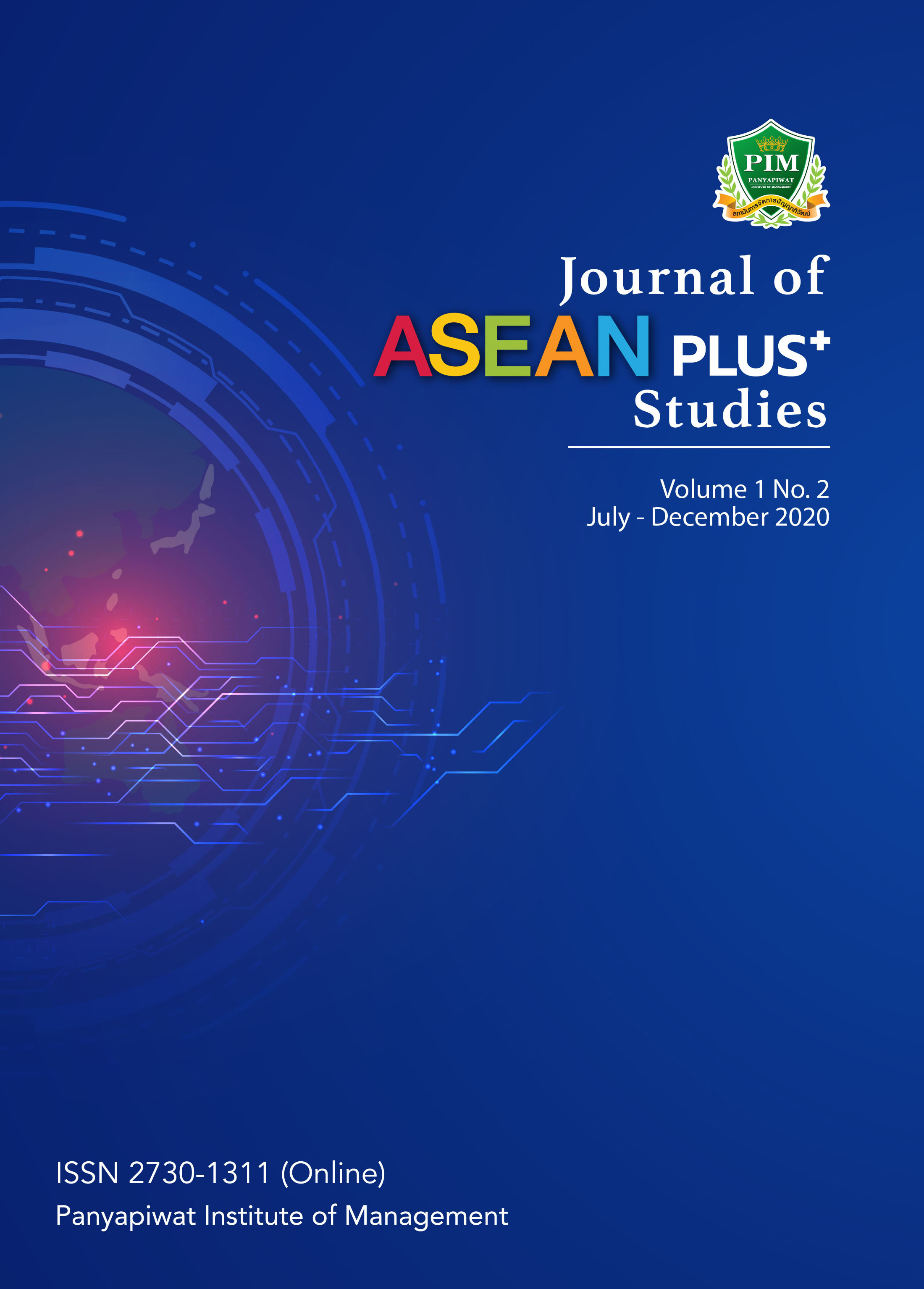Educational Centers in ASEAN Countries and Their Implications for Thai Higher Education Institutions
Keywords:
Educational Center, ASEAN, SEAMEOAbstract
The purposes of this article are as follows: 1) to explore educational centers in the member countries of ASEAN and their missions and 2) to explore their implications for Thai higher education institutions. The Association of Southeast Asian Nations (ASEAN) is established in 1967 as a regional intergovernmental organization with members comprising 10 countries in Southeast Asia, namely, Brunei Darussalam, Cambodia, Indonesia, Lao PDR, Malaysia, Myanmar, the Philippines, Singapore, Thailand, and Vietnam. The three main purposes of the establishment of ASEAN are to promote cooperation among member countries in 1) politics and security, 2) economy, and 3) socio-culture. Prior to the establishment of ASEAN, the Southeast Asian countries signed an agreement to establish the Southeast Asian Ministers of Education Organization (SEAMEO, 1965). The main purpose of this organization is to promote regional cooperation in education, science, and culture. Under the agreement, each of the SEAMEO member countries is responsible to set up and manage at least one educational center. At present, there are 26 educational centers in the member countries all of which must have their names starting with SEAMEO. Of these 26 centers, six centers have programs and activities specifically relevant for higher education institutions in member countries. These centers are the following: INNOCH, RECSAM, RELC, RIHED, SEARCA, and TROPMED. They are explored and described in more details.
References
ASEAN. (1967). The Founding of ASEAN. Retrieved April 20, 2020, from https://asen.org/asean/about-asean/history/
Kratoknok, J. (2017). Development of the ASEAN Studies Course in the Foreign Language (English) Learning Area of School-Based Curriculum for Upper Secondary Students in World Class Standard Schools. Ph.D. Dissertation, School of Educational Studies, Sukhothai Thammathirat Open University. [in Thai]
Ministry of Foreign Affairs, Department of ASEAN Affairs. (2013). ASEAN in Brief. Bangkok: Department of ASEAN Affairs. [in Thai]
Office of the National Economic and Social Development Council. (2018). ASEAN Community. Bangkok: Office of the National Economic and Social Development Council. [in Thai]
SEAMEO. (2020). About SEAMEO. Retrieved May 23, 2020, from https://www.seameo.org/Main_about/90
SEAMEO. (2020). INNOTECH SEAMEO. Retrieved May 23, 2020, form https://www.seamo-innotech.org/about-innotech
SEAMEO. (2020). SEAMEO RECSAM. Retrieved May 23, 2020, form http://www.recsam.edu.my/index.php/about-us/general-info/our-history
SEAMEO. (2020). SEAMEO RELC. Retrieved May 23, 2020, from https://www.relc.org.sg/about-us
SEAMEO. (2020). SEAMEO RIHED. Retrieved May 23, 2020, form https://rihed.seameo.org/about-us/history
SEAMEO. (2020). SEAMEO SEARCA. Retrieved May 23, 2020, from https://www.searca.org/
SEAMEO. (2020). SEMEO Secretariat. Retrieved May 23, 2020, from https://www.semeo.org/Main_about/114
SEAMEO. (2020). SEAMEO TROPMED. Retrieved May 23, 2020, from https://seameotropmednetwork.org/
SEAMEO. (1965). SEAMEO Charter. Retrieved May 23, 2020, from https://www.semeo.org/Main_centres/117






